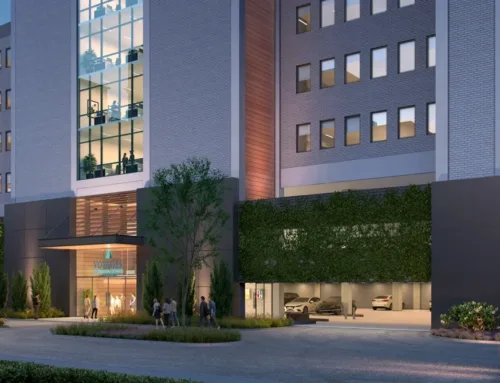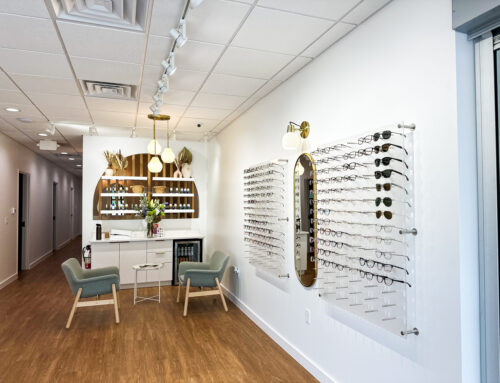
Houses in the proposed expansion area of the Lakewood Conservation District. Photography by Renee Umsted.
Neighbors in the Lakewood Conservation District expansion area are grappling with key questions in preserving the character of their neighborhood.
They have met 11 times since submitting signed petitions to Planning and Urban Design staff to signal neighborhood interest in expanding the Lakewood Conservation District. Twelve post-application meetings were initially scheduled, and more will be needed to cover all necessary topics.
During the ninth and 10th meetings, neighbors began discussing architectural styles exemplified in Lakewood. Architectural styles help determine how individual homes can be remodeled, demolished and built new.
In other words, decisions made in these meetings don’t just preserve and shape what already exists; they also have implications for the future of Lakewood.
Trevor Brown, a chief planner at the City of Dallas, began the Jan. 4 meeting by defining terms that had previously caused some confusion.
Neighbors reached a consensus that five architectural styles should be considered “contributing”: French eclectic, Spanish eclectic, Tudor, colonial revival and neoclassical.
All other styles, such as Monterey, minimal traditional and mid-century modern, are to be considered “noncontributing.”
Homes can also be classified by construction date. Original homes are those built before 1960. Existing homes are any built before the date of expansion adoption, and new homes are those built after the expansion ordinance is adopted.
Lastly, there are “significant” homes, which are those designed or built by a notable architect or builder. In Lakewood, important names include Clifford Hutsell, Charles Dilbeck, Dines and Kraft, Bertram Hill and George Dahl.
These classifications aren’t exclusive, however. It’s possible to have a home that is noncontributing, existing, original and significant.
According to Brown’s presentation, a remodel includes “improvements or repairs that change the appearance of the main structure or replace original materials of the main structure with another material.”
Homes identified as significant or contributing have to be remodeled in the same style. For example, a Tudor home has to be remodeled as a Tudor; it can’t be remodeled as French eclectic, which is another contributing style, or mid-century modern. Similarly, a Hutsell-designed Spanish eclectic home has to be remodeled as a Spanish eclectic home.
Specific conversations regarded paint. Neighbors agreed that paint — which is not regulated by the Dallas Development Code — should be regulated. They agreed that black wasn’t a good shade for a base color, and they agreed that fluorescent colors should be avoided. Both of those specifications are found in the existing Lakewood Conservation District ordinance.
However, there were mixed opinions when it came to painting brick.
Some neighbors expressed that in the past, contractors had given them a choice: Either they could match the texture of brick, or they could match the color, and they chose matching the texture and painting the brick to make it consistent. Prohibiting the painting of brick might be too restrictive, they said.
But other neighbors insisted there are nearby businesses that can supply materials found in Lakewood homes.
What was suggested toward the end of the discussion was something like the language in Hollywood/Santa Monica’s ordinance. It says that brick that hasn’t been painted can’t be painted unless: the color and texture of replacement brick can’t be matched; the brick isn’t original or compatible with the style of the main building and neighborhood; painting is the only way the brick can be restored or preserved; or painted brick is typical of the style and period of the structure.

Illustration by Jynnette Neal.
Original houses would be remodeled in the same architectural style or in a contributing style. That stipulation exists to preserve noncontributing styles that have history in the neighborhood and thereby shape the overall character of the neighborhood.
If a noncontributing home is remodeled, the proposed rule was that it should be remodeled in one of the five contributing styles. That means a mid-century modern home would have to be remodeled in the style of, for example, a Tudor.
For new construction, at least the front and side facades have to match one of the five contributing styles. Materials used would have to be typical of and compatible to original homes of the style in color, size, installation method and combination.
If a house of a contributing style is demolished, the new house has to be the same architectural style as what was previously there. For example, if a Tudor is demolished, a Tudor — and not a Spanish eclectic — will be rebuilt in its place.
The reason for that is to prevent something similar to what happened in the Belmont Addition Conservation District, which saw a surge of Prairie-style homes built in a neighborhood where there weren’t nearly as many when the ordinance was adopted.
Neither the Dallas Development Code nor the existing Lakewood Conservation District regulate demolition. But the benefit in regulating demolition would be preserving architecturally significant homes. Neighbors agreed that significant homes shouldn’t be demolished unless the cost of bringing the home to meet development and ordinance codes is more than 80% of the value of the home according to the Dallas Central Appraisal District.
Demolition would be defined as work that does not leave at least the front facade and 50% of the sides intact.
Review the Jan. 4 meeting presentation here. Find presentations and audio recordings of all previous meetings here.
If you live in the expansion area and would like to share comments about architectural styles, demolition or paint, email Trevor Brown at trevor.brown@dallas.gov and include your address and “LWCD expansion” in the subject line.
The next meeting is scheduled for 6 p.m. Jan. 18 at Samuell-Grand Recreation Center.





